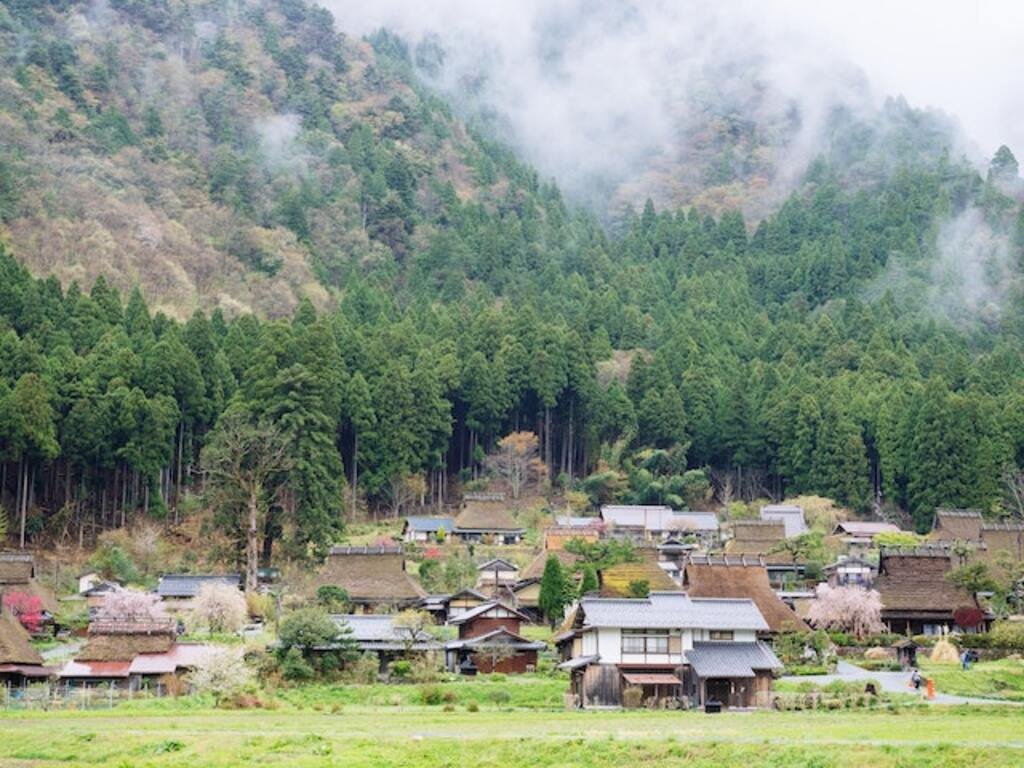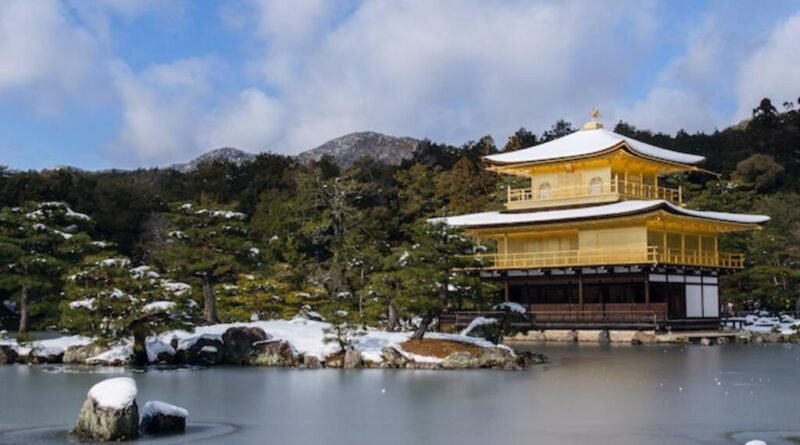The Ultimate Guide to Travelling in Japan: Tips Tricks and Hidden Gems
Are you planning a trip to incredible Japan but feel lost in the planning details? In this guide, we will provide all the essential tips and tricks to make the most of your time in Japan. We’ll take you beyond the well-known destinations to uncover hidden gems off the beaten path. Learn pro travel hacks from transportation and etiquette to saving money.
Whether you want to experience cutting-edge cities, stunning natural landscapes or relax in hot springs, we’ve got you covered with practical advice from island-hopping to navigating a Japanese menu. Artralux has created the ultimate guide to help you navigate your Japanese adventure with ease.
Table of Contents
Top 10 Tips and Tricks to Traveling to Japan
Understanding Japanese Etiquette
One of the best parts about visiting a new country is experiencing their culture. Japan has a rich culture with customs that may differ from what you’re used to. Some basic etiquette things to keep in mind are bowing as a greeting instead of handshakes, avoiding loud public speaking, and waiting your turn patiently in lines. Also important is removing your shoes when entering homes and some temples.
Using both hands to give or receive gifts is a sign of respect. And you won’t go wrong addressing people politely using honorific suffixes like -san after their name. Following these simple rules will ensure you don’t accidentally cause any offense!
Navigating Japan’s Public Transport

Public transport is the best way to get around cities like Tokyo and Kyoto. The train and subway systems are extremely efficient and punctual—buses and trains run as often as every few minutes during peak times. Having a PASMO or Suica prepaid transit card that you can reload makes payments quick. Signs and station maps are in English too.
Google Maps also works great for navigation. You can easily travel between major cities using the super-fast shinkansen bullet trains. Night buses are also an affordable option for long-distance travel between regions overnight when trains stop running. With a bit of planning and these affordable transit options, you’ll have no trouble exploring everywhere you want to go!
Savoring Japanese Cuisine
There is so much delicious food to discover in Japan! Whether you want to sample street foods like takoyaki (fried octopus balls) and okonomiyaki (savory pancakes), eat at famous chain restaurants like Yoshinoya for beef bowls, or splurge at a kaiseki multicourse dinner, the options are endless. Don’t miss out on sushi, ramen, and tempura at some of the country’s top restaurants.
Local dishes vary in different areas too – from Okinawan goya champuru to Kobe beef in Kansai. Markets are great for ready-to-eat foods and snacks too. With such incredible variety and quality, enjoying Japan’s incredible cuisine is truly part of the experience. Be sure to spend some yen on great food!
Accommodation Options
When it comes to accommodations, Japan offers something for every budget. You could opt for the full Japanese cultural immersion experience by staying in a traditional ryokan with tatami mat floors, futon bedding, and communal baths. For modern amenities, major hotel chains and independent inns provide comfortable rooms.
Hostels are also widely available. Capsule hotels that pack guests into stacked, pod-like beds are an affordable unique option if you just need a place to sleep. For budget travelers, business hotels and guesthouses start around $30-50 per night. Booking ahead is recommended, especially during high seasons and holidays. With so many options across all price points, finding the perfect lodging is easy.
Off-the-Beaten-Path Destinations
While major cities like Tokyo and Kyoto are unmissable, getting off the well-trodden tourist paths uncovers Japan’s most charming hidden gems. Hakone offers majestic volcanic scenery, onsen baths, and Lake Ashi cruises just a couple hours from Tokyo by rail. Naoshima in the Seto Inland Sea is an island paradise for art lovers featuring works integrated with the beautiful landscape. Matsue in Shimane, with its castle, park and marshlands, gives a charming regional city vibe.
And Tsumago in Magome Juku is like stepping back in time with its well-preserved post town built for travelers. Some thorough online research will lead you to discover many other unique little places. Go explore and experience “real” Japanese culture away from the crowds.
Japan on a Budget
While Japan may seem expensive, traveling here needn’t break the bank. Use cheap public transportation instead of taxis. Staying in hostels, guesthouses or simple business hotels saves a lot versus high-end accommodations. Budget meals include convenience store onigiri rice balls, cheap ramen shops, supermarket bentos and 100-yen shops for snacks. Skip expensive city attractions, and opt for free or low-cost local parks, shrines and temples instead.
Travel between areas using overnight buses. Purchasing a Japan Rail Pass before arrival offers great discounts on train travel if you’ll be doing a lot of longer-distance journeys. With some creativity and planning, you can definitely experience Japan’s riches without going over budget.
Essential Phrases and Tips for Non-Speakers
While few locals speak English outside major cities, you’ll manage just fine traveling in Japan with minimal Japanese and nonverbal communication. Learn and practice essential phrases like “onegaishimasu” (please), “arigatou” (thank you), “sumimasen” (excuse me), and numbers for ordering food or paying. Having some common phrases stored on your phone can also help. Most signs include hiragana pronunciation guides.
Gestures and showing what you want on a menu rather than ordering verbally overcomes language barriers when traveling in Japan. Translation apps like Google Translate come in very handy too for quick lookups. With locals always willing to help using whatever communication means possible, you’ll see that language isn’t a real obstacle to enjoying your ทัวร์ญี่ปุ่น!
Seasonal Highlights
Japan’s dramatic seasonal changes make timing your visit important. Spring brings the ephemeral cherry blossom season in April, where crowds gather under falling pink petals for picnics. Summer sees hot and humid weather best spent at the beach or cooling off at indoor water parks. Fall is spectacular for vibrant red maple leaves peaking mid-November in places like Nikko and Nara. Winter brings snow to the mountains and cozy warming foods and activities.
Year-round temples hold Buddhist festivals with food, dancing and folk traditions worth experiencing. New Year in cities like Hakodate give a glimpse into Japanese traditions too. Planning around specific seasonal sights and celebrations truly enhances your cultural immersion.
Cultural Experiences

A trip to Japan wouldn’t be complete without participating in quintessential cultural experiences. Try a traditional Japanese tea ceremony for a glimpse into refined aesthetics and hospitality. Onsen hot spring baths are all over, often with outdoor baths separated by gender—it’s perfectly fine to bathe nude with others. Kimono rentals let you experience dressing in these iconic outfits.
Craft lessons like flower arranging (ikebana), origami or calligraphy offer hands-on appreciation for these refined arts. Catching kabuki theater in Tokyo or a geisha performance offers a look into historic performing arts. Modern comforts like arcades and anime stores offer insights too. Truly connecting with traditions enhances the joy of travel beyond surface-level sights.
Also Read:
84 Most Beautiful Places in Japan
Top Foods You Should Try in Dubai
Packing for Japan
Pack light and focus on versatility for maneuvering Japan’s cities. Layer warm weather clothing with a light jacket that packs small. Bring comfortable walking shoes and sandals for different needs. Electronics, toiletries and medications should be in carry-on for international flights. Bring approved plug adapters for charging phones and cameras. Pack toiletries in airport-size containers for security.
Use a small daypack as your personal item for exploring and storing valuables where you can see them. Cash, cards and copies of documents stay safe in versatile money belts. Leave behind valuables, large gadgets and liquids over limits to check, simplifying your trip. Following these packing tips prevents headaches and maximizes enjoyment.
Conclusion:
I hope you loved our information and find it interesting and helpful. If you did then do let us know by putting your comment in to the comment section. Will see you in next article till then keep visiting Travel World Fashion for more such interesting article.
Note:
Featured image credit: Photo by Andrey Grushnikov: https://www.pexels.com/photo/temple-near-body-of-water-surrounded-by-trees-with-mountain-background-707677/




